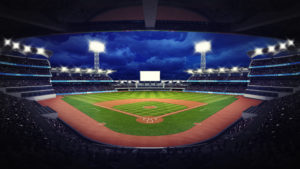 The players and owners are finally on the same page. Here’s what you need to know before the season starts.
The players and owners are finally on the same page. Here’s what you need to know before the season starts.
Baseball was in a state of freefall, and 99 days into the MLB lockout, baseball fans looked like Tom Hanks did in “Cast Away.” They were tired, scared and lonely, wondering if their favorite players would ever take the field again.
Then Mar. 10 hit. News came that the lockout was over, and baseball fans all across the world rejoiced. Not only did they learn that baseball way on its way back. They learned that it would be back in full capacity with a 162-game season.
Now that it’s time to get ready for the year, let’s go over some of the new agreement’s changes to baseball’s rules and regulations.
What has changed, and who does it affect?
The players and owners were tasked with agreeing to a new collective bargaining agreement, which establishes the terms on which the game is played, including compensation. It took the two sides more than three months, but they’ve finally come to a decision.
First, Opening Day is now Apr. 7. Prior to the lockout, the first games of the year were scheduled for Mar. 31, but when the players and owners couldn’t come to an agreement by the end of February, Commissioner Rob Manfred canceled the first two series of the year. That set the stage for a 156-game season if the two sides could see eye to eye soon after the cancellation. A week later, the players and owners still couldn’t find common ground, so two more series were canceled. Now, the shortening of the season has been undone. Part of the new agreement includes a full 162-game season with players being compensated in full.
Spring training, which was also delayed by the lockout, is now set to begin Mar. 17, with players arriving to camp by Mar. 13 for workouts. Those effects are probably most noticed in Arizona and Florida, where the teams gather to play exhibition games and get ready for the season.
A report from The Wall Street Journal estimated that a combined $1.3 billion would have been lost between Florida and Arizona had the standoff continued. The states and local companies rely on that business, with more than 3 million fans attending games in the spring. The Wall Street Journal also cited a study that found that 52% of Florida’s attendees and 60% of Arizona’s spectators were from out of state.
The hope is that the areas playing host to the pre-season exhibition games and their local businesses can still cash in on the annual travel boom, but this is just another hit following the shortened spring training of 2020 and the limited-attendance games in 2021.
The decision also comes with some financial changes inside the league. The CBT, which stands for competitive balance tax but is better known in sports as the “luxury tax,” starts at $230 million and peaks at $244 million at the end of the new collective bargaining agreement. The minimum salary for players also increased. In 2021, players made a minimum of $570,500, but the floor in 2022 is $700,000. That amount is set to increase $20,000 each year through 2026.
What changes will be seen on the field?
On the field, the National League will have a designated hitter, and pitchers will not hit. Ideally, the change will create fifteen extra jobs for hitters and bring more offense to the MLB. The playoffs will also feature 12 teams. That’s an additional team from each league, and the new rule hopes to build a higher television revenue return for owners and give two more teams a chance at lifting the trophy.
Unlike the previous two seasons when double headers featured two seven-inning games, teams will now play two full nine-inning games. Another rule rubbing baseball purists the wrong way was the runner placed on second base in extra innings. That rule has been eliminated, and extra innings games will continue with the bases empty to start the 10th, just as they did before the 2020 season.
Some other changes up for discussion were pitch clocks and bigger bases. Pitch clocks would ideally speed up the game, forcing pitchers to throw a pitch before the timer runs out to avoid incurring a penalty. Players also hoped for bigger bases, which would be expected to cause fewer injuries on the base paths Another hot-button issue is a ban of the now-popular shift, which uses analytics and data to place defensive players in positions where hitters most often hit. All three of those ideas will be tabled until the 2023 season.
Sources:


